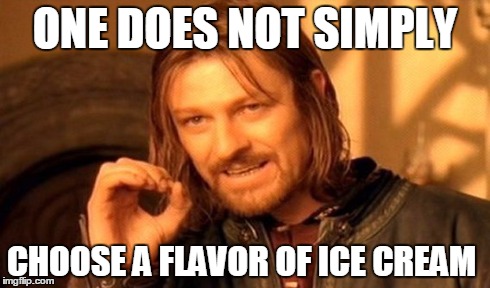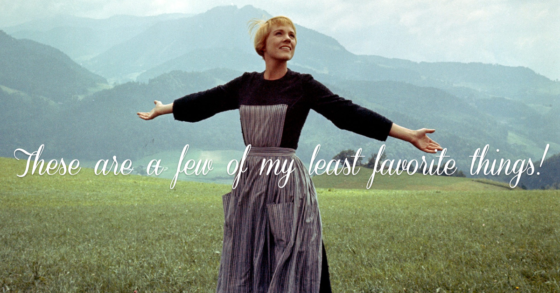The time has come.
A decision must be made.
Your family members have designated you as the ‘chooser’ of the group. The responsibility weighs on your shoulders. You try to remain calm.
‘Focus,’ you tell yourself. ‘Should I purchase the double chocolate ice-cream from x-brand, or the devil’s chocolate ice-cream from y-brand?’

The choices are the same in terms of the contents and price, but they have different names and are from different brands. You cannot decide between the two as you feel equally about both of them, so you ask for the advice of your family; they reply negatively towards the y-brand and you feel relieved, finding yourself agreeing with them, and choose the ice-cream from the x-brand instead.
While a silly example, this dilemma helps illustrate an interesting observation about humans, at least of European descent (or influenced by Western culture): when we are highly ambivalent towards two choices, we are more easily influenced in our decision. According to psychology researchers, Mr. Andy Ng, Dr. Michaela Hyne and Dr. Tara MacDonald, those of European descent are more likely to be influenced either positively or negatively when unsure of what to think about two objects or subjects. Yet, they also point out that East Asians exhibit greater levels of tolerance towards conflicting views or when possessing high levels of ambivalence towards objects/subjects. In other words, those of East Asian descent or region are more likely to hold two conflicting ideas in their minds without the need to pick one as superior to the other.
In their study published in 2011, titled “Culture Moderates the Pliability of Ambivalent Attitudes,” Ng, Hyne, and MacDonald were interested in researching the degree to which culture influences the willingness to shift attitudes in those of Western and Eastern cultures after a persuasive attempt.
A multi-step study, the researchers first delivered an online survey serving as a pretest for the main study. Within the pretest, the participants evaluated objects generally known to be regarded as highly ambivalent, ranging from slightly negative (knives, exams, and dentists) to positive (dormitories, parties, television, cake and ice-cream), as well as objects generally thought of as being easier for participants to assess, such as the predominantly positive “flowers, silk, clowns, [and] dancing” versus “cancer, mosquitoes, crime, [and] tooth cavities” (Ng, Hyne, MacDonald, 2011, pp. 1316). After ranking the choices overall from 0 (extremely unfavorable) to 100 (extremely favorable), they also ranked them individually on a scale from 1 – 4, with four being more extreme (either favorably or unfavorably, depending on the set of objects) (pp. 1316).

From this study, the researchers noticed that while “dormitories” was reported as highly ambivalent, “silk,” in comparison, was ranked similarly by East Asian Canadians and European Canadians and had low levels of ambivalence (pp. 1317).
As such, they chose these two as their objects for the main study.
The main hypothesis the researchers wanted to study was how culture and ambivalence affect how willing an individual is to shift their perspective on an object. Over the course of several weeks, the participants were first asked to rate the selected objects “silk” and “dormitories,” then were given persuasive essays (randomly assigned, either positive or negative) on the two objects, followed by another assessment of the participants overall attitudes towards them (pp. 1317). Using the same scales as the pretest, the researchers found that European Canadians did experience higher attitude changes resulting from the persuasive essays than East Asian Canadians (pp. 1321). For East Asian Canadians, the researchers found that their attitude changes were not associated with ambivalence (pp. 1321).
So, what does this all mean?

Essentially, the research by Ng, Hyne, and MacDonald suggests that Westerners are more uncomfortable with ambiguity and uncertainty than those of East Asian descent. For East Asians, holding two conflicting ideas without the need for resolution is easier in comparison to those of European descent (pp. 1321). This implies that East Asians are not as influenced by the effects of cognitive dissonance (the uncomfortable feeling when your actions do not match your beliefs, or two beliefs do not align, so we typically change our attitudes in order to resolve the tension). The researchers also point out that there might be other underlying causes for these differences due to differences in philosophies, as East Asians might lean more towards a dialectical view of the world, where not everything needs to be explained or dissected (pp. 1321).
Finally, the study provides a unique insight into how our culture shapes who we are and how we think. The researchers point out that although East Asians might not be as inclined to change their thinking, they might be more influenced if the people close to them think differently (pp. 1322). This is based on the knowledge that East Asians are typically collectivist cultures who seek harmony with others and define themselves by their relations (pp. 1322). Moreover, the article focuses on Canadians of either European or East Asian descent. It would be interesting to see how Westerners and first generation East Asian students would be different or similar to the findings of this study.
So, the next time you are standing in the frozen section, debating between ice-cream tubs, think about how your culture has shaped you.
(Editor’s note: now I want ice-cream.)
This article was written for Dr. Carter’s Social Psychology class by Brittney Rowe, Kaitlyn Johns, and Ashley Washington. The source can be found here.
Get connected!
Instagram & Twitter: #PsychRC @RC_Psychology
Facebook: https://www.facebook.com/rcpsychology
Blog: https://psych.pages.roanoke.edu/
Linked In: https://www.linkedin.com/groups/RC-Psychology-8140491/about
Website: http://www.roanoke.edu/inside/a-z_index/psychology